İstanbul
İstanbul, once known as the capital of capital cities, has many unique features. It is the only city in the world to straddle two continents, and the only one to have been a capital during two consecutive empires – Christian and Islamic. Once was capital of the Ottoman Empire, İstanbul still remains the commercial, historical and cultural pulse of Turkey, and its beauty lies in its ability to embrace its contradictions. Ancient and modern, religious and secular, Asia and Europe, mystical and earthly all co-exist here.Its variety is one of İstanbul?s greatest attractions: The ancient mosques, palaces, museums and bazaars reflect its diverse history. The thriving shopping area of Taksim buzzes with life and entertainment. And the serene beauty of the İstanbul strait, Princes Islands and parks bring a touch of peace to the otherwise chaotic metropolis.
Adalar, Avcılar, Bağcılar, Bahçelievler, Bakırköy, Beşiktaş, Bayrampaşa, Beykoz, Beyoğlu, Eminönü, Eyüb, Fatih, Gaziosmanpaşa, Kadıköy, Kâğıthane, Kartal, Küçükçekmece, Pendik, Sarıyer, Şişli, Ümraniye, Üsküdar, Zeytinburnu, Büyükçekmece, Çatalca, Silivri, Şile, Esenler, Güngören, Maltepe, Sultanbeyli, and Tuzla.The İstanbul strait
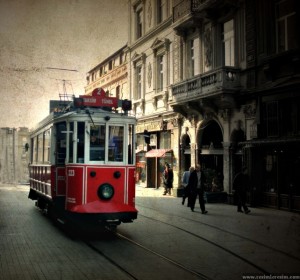
Beyoğlu and Taksim: Beyoğlu is an interesting example of a district with European-influenced architecture, from a century before. Europe?s second oldest subway, Tunel was built by the French in 1875, must be also one of the shortest ? offering a one-stop ride to start of Taksim. Near to Tunel is the Galata district, whose Galata Tower became a famous symbols of İstanbul, and the top of which offers a tremendous 180 degree view of the city.From the Tunel area to Taksim square, is one of the city?s focal points for shopping, entertainment and urban promenading: İstiklal Caddesi is a fine example of the contrasts and compositions of İstanbul; fashion shops, bookshops, cinemas, markets, restaurants and even hand-carts selling trinkets and simit (sesame bread snack) ensure that the street is packed throughout the day until late into the night. The old tramcars re-entered into service, which shuttle up and down this fascinating street, and otherwise the street is entirely pedestrianised. There are old embassy buildings, Galatasaray High School, the colourful ambience of Balık Pazarı (Fish Bazaar) and restaurants in Çiçek Pasaji (Flower Passage).
Taksim and Beyoğlu have for centuries been the centre of nightlife, and now there are many lovely bars and clubs off Istiklal Cadesi, including some of the only gay venues in the city. Beyoğlu is also at the centre of the more bohemian arts scene.

Sultanahmet: Many places of tourist interest are concentrated in Sultanahmet, in heart of the Imperial Centre of the Ottoman Empire. The most important places in this area, all of which are described in detail in the ?Places of Interest? section, are Topkapı Palace, Aya Sofya, Sultanahmet Mosgue (the Blue Mosque), the Hippodrome, Kapalı Carşı (Covered Market), Yerebatan Sarnıcı and the Museum of Islamic Art.
In addition to this wonderful selection of historical and architectural sites, Sultanahmet also has a large concentration of carpet and souvenir shops, hotels and guesthouses, cafes, bars and restaurants, and travel agents.
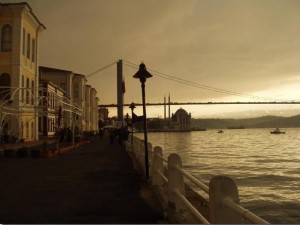
Ortaköy: Ortakoy was a resort for the Ottoman rulers because of its attractive location on the İstanbul strait, and is still a popular spot for residents and visitors. The village is within a triangle of a mosque, church and synagogue, and is near çirağan Palace, Kabataş High School, Feriye, Princess Hotel.
The name Ortaköy reflects the university students and teachers who would gather to drink tea and discuss life, when it was just a small fishing village. These days, however, that scene has developed into a suburb with an increasing amount of expensive restaurants, bars, shops and a huge market. The fishing, however, lives on and the area is popular with local anglers, and there is now a huge waterfront tea-house which is crammed at weekends and holidays.
Sarıyer: The first sight of Sarıyer is where the İstanbul strait connects with the Black Sea, after the bend in the river after Tarabya. Around this area, old summer houses, embassies and fish restaurants line the river, and a narrow road which separates it from Büyükdere, continues along to the beaches of Kilyos.
Sarıyer and Rumeli Kavağı are the final wharfs along the European side visited by the İstanbul strait boat trips. Both these districts, famous for their fish restaurants along with Anadolu Kavagı, get very crowded at weekends and holidays with İstanbul residents escaping the city.
After these points, the İstanbul strait is lined with tree-covered cliffs and little habitation. The Sadberk Hanım Museum, just before Sariyer, is an interesting place to visit; a collection of archaeological and ethnographic items, housed in two wooden houses. A few kilometres away is the huge Belgrade Forest, once a haunting ground of the Ottomans, and now a popular weekend retreat into the largest forest area in the city.
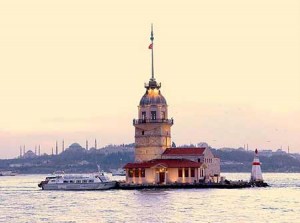
Üsküdar: Relatively unknown to tourists, the suburb of Üsküdar, on the Asian side of the İstanbul strait, is one of the most attractive suburbs. Religiously conservative in its background, it has a tranquil atmosphere and some fine examples of imperial and domestic architecture.
The iskele, or Mihrimah Mosgue is opposite the main ferry pier, on a high platform with a big covered porch in front, often occupied by older local men watching life around them. Opposite this is Yeni Valide Mosgue, built in 1710, and the Valide Sultan?s green tomb rather like a giant birdcage. The Çinili Mosque takes its name from the beautiful tiles which decorate the interior, and was built in 1640.
Apart from places of religious interest, Üsküdar is also well known as a shopping area, with old market streets selling traditional local products, and a good fleamarket with second hand furniture. There are plenty of good restaurants and cafes with a great views of the İstanbul strait and the rest of the city, along the quayside. In the direction of Haydarpaşa is the Karaca Ahmet Cemetery, which is the largest Muslim graveyard in İstanbul. The front of the Çamlıca hills lie at the ridge of area and also offer great panoramic views of the islands and river.
Kadıköy: Further down to the south along, the İstanbul strait towards the Marmara sea, Kadıköy has developed into a lively area with up-market shopping, eating and entertainment making it popular especially with wealthy locals. Once prominent in the history of Christianity, the 5th century hosted important consul meetings here, but there are few reminders of that age. It is one of the improved districts of İstanbul over the last century, and fashionable area to promenade along the waterfront in the evenings, especially around the marinas and yacht clubs.
Bağdat Caddesi is one of the most trendy ? and label-conscious ? fashion shopping streets, and for more down-to-earth goods, the Gen Azim Gündüz Caddesi is the best place for clothes, and the bit pazari on Ozelellik Sokak is good for browsing through junk. The Benadam art gallery remains in Moda district with many other foreing cusines, restaurants and cafes.

Haydarpaşa: To the north of Kadikoy is Haydarpasa, and the train station built in 1908 with Prussian-style architecture which was the first stop along the Baghdad railway. Now it is the main station going to eastbound destinations both within Turkey, and international. There are tombs and monuments dedicated to the English and French soldiers who lost their lives during the Crimean War (1854-56), near the military hospital. The north-west wing of the 19th Century Selimiye Barracks once housed the hospital, used by Florence Nightingale to care for soldiers, and remains to honour her memory.
Polonezköy: Polonezköy, although still within the city, is 25 km. away from the centre and not easy to reach by public transport. Translated as ?village of the Poles?, the village has a fascinating history: It was established in 1848 by Prince Czartorisky, leader of the Polish nationals who was granted exile in the Ottoman Empire to escape oppression in the Balkans. During his exile, he succeeded in establishing a community of Balkans, which still survives, on the plot of land sold to him by a local monastery.

Since the 1970s the village has become a popular place with local İstanbulites, who buy their pig meat there (pig being forbidden under Islamic law and therefore difficult to get elsewhere). All the Poles have since left the village, and the place is inhabited now by wealthy city people, living in the few remaining Central European style wooden houses with pretty balconies.
What attracts most visitors to Polonezkoy is its vast green expanse, which was designated İstanbul?s first national park, and the walks though forests with streams and wooden bridges. Because of its popularity, it gets crowded at weekends and the hotels are usually full.
Kilyos: Kilyos is the nearest beach resort to the city, on the Black Sea coast on the European side of the İstanbul strait. Once a Greek fishing village, it has quickly been developed as a holiday-home development, and gets very crowded in summer. Because of its ease to get there, 25km and plenty of public transport, it is good for a day trip, and is a popular weekend getaway with plenty of hotels, and a couple of campsites.
Şile: A pleasant, small holiday town, Şile lies 50km from Üsküdar on the Black Sea coast and some people even live there and commute into İstanbul. The white sandy beaches are easily accessible from the main highway, lying on the west, as well as a series of small beaches at the east end. The town itself if perched on a clifftop over looking the bay tiny island. There is an interesting French-built black-and-white striped lighthouse, and 14th century Genoese castle on the nearby island. Apart from its popular beaches, the town is also famous for its craft; Şile bezi, a white muslin fabric a little like cheesecloth, which the local women embroider and sell their products on the street, as well as all over Turkey.
The town has plenty of accommodation available, hotels, guest houses and pensions, although can get very crowded at weekends and holidays as it is very popular with people from İstanbul for a getaway, especially in the summer. There are small restaurants and bars in the town.
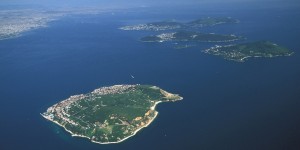
Prince?s Islands: Also known as İstanbul Islands, there are eight within one hour from the city, in the Marmara Sea. Boats ply the islands from Sirkeci, Kabataş and Bostancı, with more services during the summer. These islands, on which monasteries were established during the Byzantine period, was a popular summer retreat for palace officials. It is still a popular escape from the city, with wealthier owning summer houses.
Büyükada The largest and most popular one in İstanbul is Büyükada (the Great Island). Large wooden mansions still remain from the 19th century when wealthy Greek and Armenian bankers built them as a holiday villas. The island has always been a place predominantly inhabited by minorities.
Buyukada has long had a history of people coming here in exile or retreat; its most famous guest being Leon Trotsky, who stayed for four years writing ?The History of the Russian Revolution?. The monastery of St George also played host to the granddaughter of Empress Irene, and the royal princess Zoe, in 1012.
The island consists of two hills, both surmounted by monasteries, with a valley between. Motor vehicles are banned, so getting around the island can be done by graceful horse and carriage, leaving from the main square off Isa Celebi Sokak. Bicycles can also be hired.
The southern hill, Yule Tepe, is the quieter of the two and also home of St George?s Monastery. It consists of a series of chapels on three levels, the site of which is a building dating back to the 12th century. In Byzantine times it was used as an asylum, with iron rings on the church floors used to restrain patients. On the northern hill is the monastery İsa Tepe, a 19th century house.
The entire island is lively and colourful, with many restaurants, hotels, tea houses and shops. There are very big well-kept houses, trim gardens, and pine groves, as well as plenty of beach and picnic areas.
Burgazada It is a smaller and less infrastructured for tourists.The famous Turkish novelist, Sait Faik Abasıyanık lived there, and his house has been turned into a museum dedicated to his work, and retains a remarkable tranquil and hallowed atmosphere.
Heybeliada ?Island of the Saddlebag?, because of its shape, is loved for its natural beauty and beaches. It also has a highly prestigious and fashionable watersports club in the northwest of the island. One of its best-known landmarks is the Greek Orthodox School of Theology, with an important collection of Byzantine manuscripts. The school sits loftily on the northern hill, but permission is needed to enter, from the Greek Orthodox Patriarchate in Fener. The Deniz Harp Okulu, the Naval High School, is on the east side of the waterfront near the jetty, which was originally the Naval War Academy set up in 1852, then a high school since 1985. Walking and cycling are popular here, plus isolated beaches as well as the public Yöruk Beach, set in a magnificent bay.
There are plenty of good local restaurants and tea houses, especially along Ayyıldız Caddesi, and the atmosphere is one of a close community.
Environment: Wide beaches of Kilyos at European side of Black Sea at 25th km. outside the İstanbul, is attracting İstanbul residents during summer months. Belgrad Forest, inside from Black Sea, at European Side is the widest forest around İstanbul. İstanbul residents, at week ends, come here for family picnic with brazier at its shadows. 7 old water tank and some natural resources in the region compose a different atmosphere. Moğlova Aqueduct, which is constructed by Mimar Sinan during 16th century among Ottoman aqueducts, is the greatest one. 800 m. long Sultan Süleyman Aqueduct, which is passing over Golf Club, and also a piece of art of Mimar Sinan is one of the longest aqueducts within Turkey.
Polonezköy, which is 25 km. away from İstanbul, is founded at Asia coast during 19th century by Polish immigrants. Polonezköy, for walking in village atmosphere, travels by horse, and tasting traditional Polish meals served by relatives of initial settlers, is the resort point of İstanbul residents. Beaches, restaurants and hotels of Şile at Black Sea coast and 70 km. away from Üsküdar, are turning this place into one of the most cute holiday places of İstanbul. Region which is popular in connection with tourism, is the place where famous Şile cloth is produced.
Bayramoğlu – Darıca Bird Paradise and Botanic Park is a unique resort place 38 km. away from İstanbul. This gargantuan park with its trekking roads, restaurants is full of bird species and plants, coming from various parts of the world.
Sweet Eskihisar fisherman borough, to whose marina can be anchored by yachtsmen after daily voyages in Marmara Sea is at south east of İstanbul. Turkey’s 19th century famous painter, Osman Hamdi Bey’s house in borough is turned into a museum. Hannibal’s tomb between Eskihisar and Gebze is one of the sites around a Byzantium castle.
There are lots of İstanbul residents’ summer houses in popular holiday place 65 km. away from İstanbul, Silivri. This is a huge holiday place with magnificent restaurants, sports and health centers. Conference center is also attracting businessmen, who are escaping rapid tempo of urban life for “cultural tourism” and business – holiday mixed activities. Scheduled sea bus service is connecting İstanbul to Silivri.
Islands within Marmara Sea, which is adorned with nine islands, was the banishing place of the Byzantium princes. Today they are now wealthy İstanbul residents’ escaping places for cool winds during summer months and 19th century smart houses. Biggest one of the islands is Büyükada. You can have a marvelous phaeton travel between pine trees or have a swim within one of the numerous bays around islands!
History of Istanbul
The city has been conquered, fought over and rebuilt many times over the centuries. İstanbul ?s history dates back to the first settlement possibly in the 13th Century BC, although was founded by Byzas the Megarian in the 7th Century BC, from when the city was named Byzantium. A small colony of Greeks inhabited the area until 3rd Century BC, and over the next 1000 years became a thriving trading and commercial centre. Whilst continuing life as a trading city during the Roman Empire, it was then conquered by Emperor Septimus Severius in 193 AD.
During the 4th century, İstanbul was selected by the Roman Empire to be the new capital, instead of Rome, by Constantine. It was a strategic choice: Built on seven surrounding hills ? echoing that of Rome ? the city would have control of the İstanbul Strait and easy access to the harbour of the Golden Horn. The city was re-organized within six years, its ramparts widened and the construction of many temples, official buildings, palaces, hamams and hippodrome.
With a great ceremony, in the year 330, the city was officially announced as the capital of the Roman Empire, and known as Constantinople in the late eras.
It remained the capital of the eastern Roman Empire (Byzantine) for a long period, due to the fall of the west Roman Empire in the 5th century. By the sixth century, the population exceeded half a million, and was considered a golden age under Emperor Justinyen?s reign.
The Byzantium Empire and İstanbul ‘s latter history is full of palace and church intrigues, was overrun by the Arabs in the 7th and 8th centuries, the Bulgars in the 9th and 10th, but could not keep out the Crusaders who conquered in 1204. They destroyed and raided it for many more years – including churches, monasteries and monuments, which led to a decline in the population. The city passed reign to Byzantium again in 1261, did not regain its former richness, and was conquered by Turks in 1453 after a 53-day siege and the hands of control changed yet again.
It then became the capital city of Ottoman Empire, which saw a population increase with immigrants from other parts of the country, with religious freedom and social rights granted to Greeks, Armenians and Jews. Mehmet the Conqueror began to rebuild it, with a new palace and mosque (Fatih Camii) and tried to inject new life into the economy.
The reign of Suleyman the Magnificent (1520-66) was considered the greatest of all the Ottoman leaders, and the military conquests paid for the most impressive Ottoman architecture, the work of Mimar Sinan. The city was also the centre of the Islamic work, and domes and minarets from hundreds of mosques dotted the skyline.
But a century after the death of Suleyman, the Empire started to decline again. By the end of the 18th century, whilst the empire was in decline with more territory being lost to the West, and sultans becoming more interested in Western institutional models. There was a short-lived Ottoman parliament and constitution in 1876, and by the end of the World War I during which allied troops occupied the city, the once-great empire was in shambles.
This changed radically with the emergence of a prominent commander of the Turkish army, who entered the struggle for the Turkish nation. Mustafa Kemal Ataturk was considered a hero after the 4-year long War of Independence, after which he established the Republic if Turkey in 1923. Moving the capital to Ankara, then a small provincial town in Anatolia, İstanbul was simply the commercial and cultural centre, which it still remains today.
Geography of Istanbul
The summer months in Istanbul are generally hot and quite humid. The winters can be cold and wet, although not as extreme as other areas of the country. The sea temperature is creep up to 30 degrees in June, July and August, with very little rain. Spring and autumn are popular times to visit because of the comfortable climate, good for lots of walking and sightseeing, with highs between 15 ? 25 degrees C, in April, May, September and October. By the winter, the dry cold air mass from the Black Sea and cold damp front from the Balkans brings a chilly season with daytime highs of between 10 ? 15 degrees C, and nights much colder. Although rarely falling to freezing point, there is the occasional light snow in the city.
Art, Culture and Entertainment
İstanbul is an international art and cultural center. The International Arts and Cultural Festival is held each year in June and July with famous artists coming from all over the world. These performances are held mostly at the Atatürk Cultural Center. The İstanbul Science Center (Bilim Merkezi), founded by the Science Center Foundation and located on the campus of İstanbul Technical University, has hands-on experimental and theoretical opportunities for adults and children of various educational levels. In March and April you can lake in the International Film Festival. Those who enjoy classical music can hear it at the Cemal Reşit Rey Hall. Operas, operettas, ballets, films, concerts, exhibitions and conferences all contribute to the cultural palette of the city.
İstanbul also has a rich program of light entertainment. Nightclubs provide splendid entertainment throughout dinner, ranging from a selection of Turkish songs to belly-dancing. Alongside these are modern discos, cabarets, and jazz clubs in the Taksim-Harbiye district. In Sultanahmet, there are a number of restaurants in restored Byzantine and Ottoman buildings which offer a unique setting for an evening out.
Kumkapı, with its many taverns, bars and fish restaurants, is another attractive district. People have been meeting for years at Çiçek Pasajı in the district of Beyoğlu for snacks and seafood specialties. Also in the area near Çiçek Pasajı is the narrow Nevizade Street, which is the best place in İstanbul for eating Turkish specialties and drinking rakı, the special Turkish drink.
On the İstanbul Strait, Ortaköy is the best place for nightlife in İstanbul, with its nightclubs, jazz clubs, line seafood restaurants and bars.
In Eminönü, do not miss the opportunity of seeing the fishermen dressed in traditional Ottoman dollies and their Ottoman-style boats on which you may board to sample their delicious fried fish.
You may also want to visit Tatilya Cumhuriyeti, a large amusement park in Beylikdüzü, past Haramidere on the road to the Atatürk International Airport.
How to Get Istanbul
By Road : Not surprisingly, Istanbul is well connected to every part of Turkey. Buses are frequent and plentiful, and the main coach station (otogar) is at Esenler, on the European side.
There are countless private bus companies, all of whom have a ticket office at the station and the larger ones have offices dotted around town, especially in areas like Taksim, Sultanahmed and Besiktas.
Prices vary slightly regarding quality of the vehicle. There are also departures from Harem, on the Asian side. For journeys further afield, there buses to Greece, Macedonia, Germany, France, Austria, Switzerland, Saudi Arabia, Syria, Iran, Russia, Georgia, Romania, Bulgaria and Jordan.
Bus Station Tel: (+90-212) 658 05 05, 658 10 10, 333 37 63, 310 63 63.
Within the city, public transport is a good way of getting around. There are minibuses, buses, taxis, trams (from Aksaray) a new subway (between Taskim and Levent) and a tiny electric tramcar (Beyoğlu to Taksim).
By Rail : Not as popular a mode of transport as buses, with a much smaller network, there are rail connections from Istanbul to Ankara, Izmir and Eastern Anatolian cities. Most of the services are slower than buses, although between the three main cities, there are the mavi tren, mototren or ekspress, which are fast and comfortable.
Reservations are essential for these journeys, and there are several classes of seats and sleepers. International services from Sirkeci (on the European side) and Haydarpasa (Asian side) stations include Vienna, Munich, Budapest, Salonica, (via Eskisehir, Konya, and Gaziantep), Aleppo, (via Tatvan and Van), Tehran, Moscow and Bucharest. Trains heading west leave from Sirkeci, and east from Haydarpasa station.
Sirkeci İnformation Tel: (+90-212) 527 0050/51. Reservations Tel: (+90-212) 520 6575
Haydarpasa İnformation Tel: (+90-216) 336 0475/2063. Reservations Tel: (+90-216) 336 4470, 337 8724.
By Boat : Maritime Lines run both the urban and national transport. Marinas also have connections with European ports.
Urban Maritime Transportation runs ships which operate between the following destinations within Istanbul: Kadikoy ? Haydarpasa ? Karakoy; Eminonu ? Uskudar; Eminonu ? Kadikoy; Bridge ? Yenikoy; Beykoz ? Kavaklar; Sirkeci – Bostanci, Bridge ? Prince?s Islands; Bridge ? Yalova; Kabatas ? Cinarcik; Bostanci – Cinarcik.
Boats operate from Istanbul to the following Black Sea towns: Zonguldak, Sinop, Samsun, Giresun, Trabzon, Rize, as well as Izmir. Marmara Lines run to Marmara Island, Bandirma and Mudanya.
Useful contacts:
Port Tel : (+90-212) 245 53 66/249 71 78/249 18 96.
Address: TDY Maritime Lines Agency, Rihtim Cad. Kadikoy, Istanbul
Head Office Tel: (+90-212) 245 53 66/249 71 78/249 18 96.
Reservation Tel: (+90-212) 249 92 22/293 74 54
Information Tel: (+90-212) 244 25 02/244 02 07
By Air : Ataturk International Airport is 20 km from city centre. The new airport is the biggest in the country, with the most international flights. There are direct flights to every European capital, and many to Asia, USA and the Middle East.
The domestic terminal has flights to every domestic airport in the country, with several a day to major cities like Ankara and Izmir. Turkish Airlines (THY) is the national carrier.
Kaynak:http://www.turizm.gov.tr
- Genel
- Yorumlar(3)



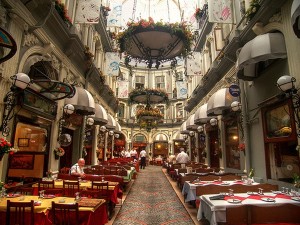
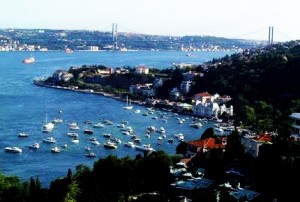

Temmuz 29th, 2011 at 17:26
very nice
Ocak 8th, 2015 at 01:31
[...] ISTANBUL,HOTELS OF ISTANBUL,,THE ? ? History of Istanbul. The city has been conquered, fought over and rebuilt many times over the centuries. İstanbul ?s history dates back to the first settlement …… [...]
Ocak 8th, 2015 at 12:26
[...] ISTANBUL,HOTELS OF ISTANBUL,,THE ? ? History of Istanbul. The city has been conquered, fought over and rebuilt many times over the centuries. İstanbul ?s history dates back to the first settlement …… [...]